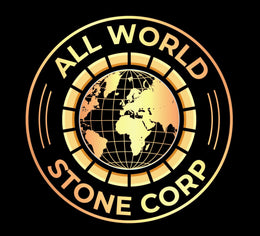Selecting Granite Materials: A Guide for Contractors, DIY Enthusiasts, and Granite Newbies
Granite countertops are prized for their beauty, durability, and elegance. Whether you're a contractor undertaking a major kitchen renovation, a DIYer on a budget, or a granite newbie just getting started, knowing how to select the right granite materials is crucial to the success of your project. Here's a guide to help you navigate the process.
Understanding Granite Materials
Granite is a natural stone that's been used for centuries in construction and interior design. It's quarried from the earth in large blocks, then cut into slabs and polished. Each slab of granite is unique, with its own color, pattern, and texture.
Types of Granite: Slab Levels and Colors
When selecting granite, one of the first things to consider is the type. Granite is typically classified into various levels (also known as grades or tiers) based on factors like the stone's color, pattern, origin, and thickness.
**Level 1 (Low-Grade Granite):** This is the most affordable grade of granite. It's usually thinner and may come from China or Brazil. The colors are basic and the patterns are more common.
**Level 2 (Mid-Grade Granite):** This granite is a bit more unique in terms of color and pattern. It's usually thicker and comes from India or Brazil.
**Level 3+ (High-Grade Granite):** This is the priciest and most distinctive type of granite, with unique patterns and vibrant colors. It's usually imported from Italy, Africa, or Brazil.
In terms of colors, granite comes in a wide range, from whites and beiges to blues, greens, and blacks. Each color has a different impact on the price.
Factors Influencing Price
**Color:** Rare colors tend to be more expensive. Blue, for example, is less common in granite and thus often carries a higher price tag. More common colors, like beige or brown, are usually more affordable.
**Pattern:** Granite with a unique pattern, like flowing or veining, can be more expensive than granite with a more uniform, speckled pattern.
**Thickness:** Thicker granite slabs are more expensive than thinner ones.
**Country of Origin:** Granite imported from countries with high shipping costs or import tariffs will be more expensive.
Sourcing Granite: Wholesalers vs. Remnant Materials
Once you've decided on the type of granite you want, you need to decide where to source it. Here are two options:
**Wholesalers:** These companies purchase large quantities of granite slabs directly from quarries around the world, allowing them to offer a wide variety of colors and patterns. Buying from a wholesaler can offer more choice, but it's usually more expensive.
**Remnant Materials:** If you're on a budget or have a smaller project, consider purchasing remnant materials. These are leftover pieces from larger slabs that were cut for other projects. Remnants can offer high-quality granite at a fraction of the cost of a full slab, and they're an environmentally friendly option because they utilize materials that would otherwise go to waste.
Making Your Selection "You've Got To Feel It."
When selecting granite, remember to consider the overall design of your space. The granite should complement other elements, like cabinetry and flooring, rather than clash with them. It's also a good idea to bring samples of your cabinet finish and floor color when you go to select your granite.
Take your time to inspect each granite slab. Look for any cracks or imperfections that could affect the durability or appearance of the countertop. Remember, natural stone is not perfect, and some markings or color variations can add character.
In conclusion, selecting the right granite materials involves considering factors like slab level, color, pattern, and sourcing options. By taking the time to understand these factors and how they influence price, you can find the perfect granite for your project—whether you're a contractor, a DIY enthusiast, or a granite newbie.
PS. The microfiber cloth idea is genius! Looking forward to allowing our own clients try this!

